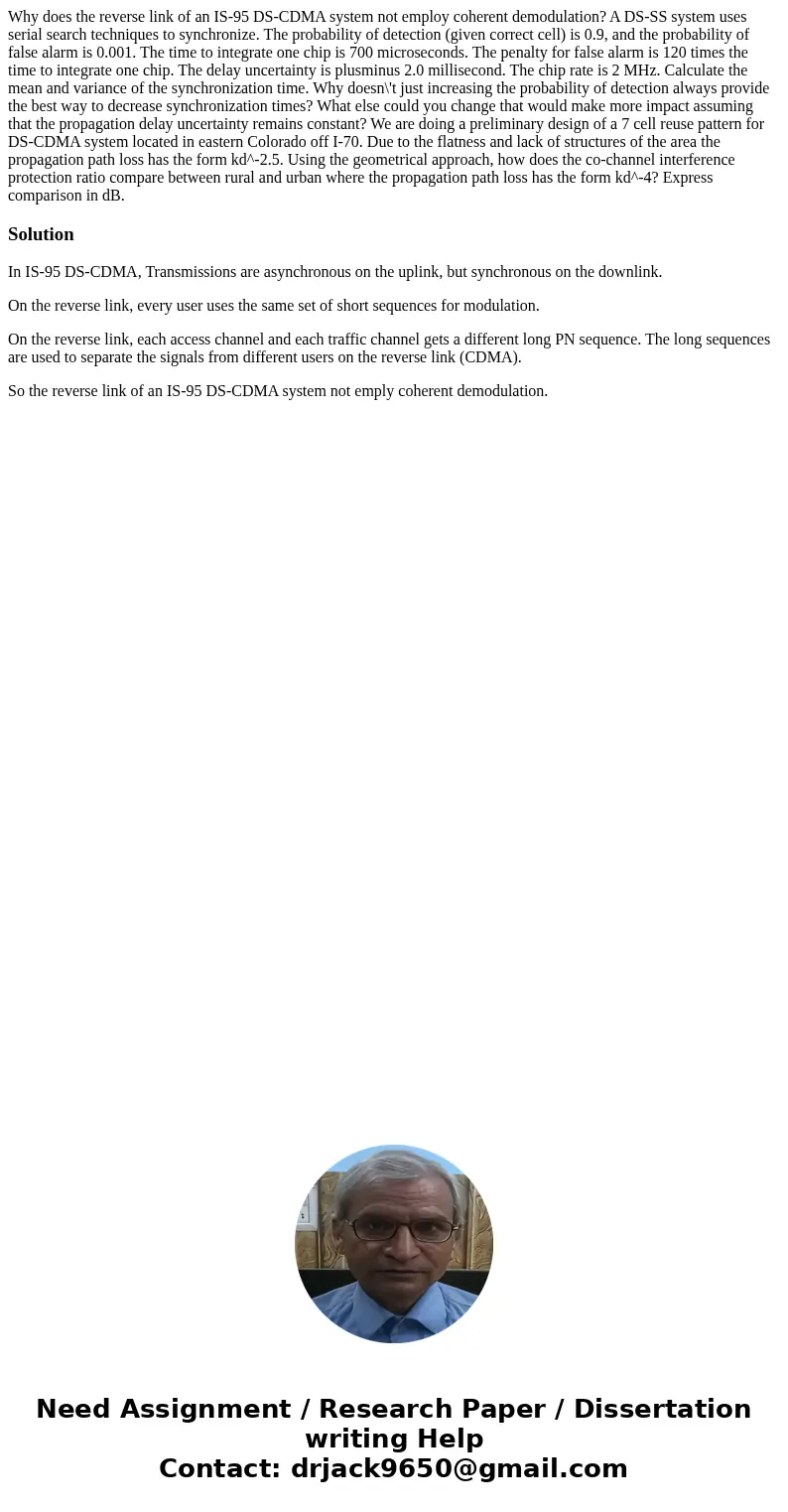Why does the reverse link of an IS95 DSCDMA system not emplo
Why does the reverse link of an IS-95 DS-CDMA system not employ coherent demodulation? A DS-SS system uses serial search techniques to synchronize. The probability of detection (given correct cell) is 0.9, and the probability of false alarm is 0.001. The time to integrate one chip is 700 microseconds. The penalty for false alarm is 120 times the time to integrate one chip. The delay uncertainty is plusminus 2.0 millisecond. The chip rate is 2 MHz. Calculate the mean and variance of the synchronization time. Why doesn\'t just increasing the probability of detection always provide the best way to decrease synchronization times? What else could you change that would make more impact assuming that the propagation delay uncertainty remains constant? We are doing a preliminary design of a 7 cell reuse pattern for DS-CDMA system located in eastern Colorado off I-70. Due to the flatness and lack of structures of the area the propagation path loss has the form kd^-2.5. Using the geometrical approach, how does the co-channel interference protection ratio compare between rural and urban where the propagation path loss has the form kd^-4? Express comparison in dB.
Solution
In IS-95 DS-CDMA, Transmissions are asynchronous on the uplink, but synchronous on the downlink.
On the reverse link, every user uses the same set of short sequences for modulation.
On the reverse link, each access channel and each traffic channel gets a different long PN sequence. The long sequences are used to separate the signals from different users on the reverse link (CDMA).
So the reverse link of an IS-95 DS-CDMA system not emply coherent demodulation.

 Homework Sourse
Homework Sourse